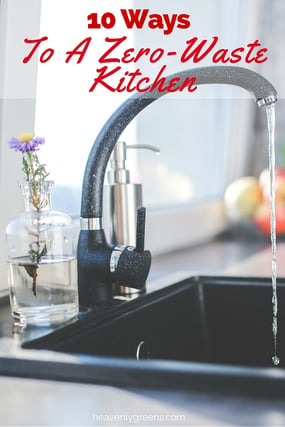 There is growing interest among families in Northern California and elsewhere to aim for a zero-waste kitchen. While becoming waste-free is a work in progress, it is possible to make major improvements relatively simply.
There is growing interest among families in Northern California and elsewhere to aim for a zero-waste kitchen. While becoming waste-free is a work in progress, it is possible to make major improvements relatively simply.
Zero-waste aficionados also shun plastic in any form. Plastic containers do enable storage of food items and left-overs, but some of the chemicals used to manufacture these products are toxic, and they can leach into food. Besides, eventually plastic containers wear out and become, well, waste.
Here are 10 practical ways you and your family can work toward a zero-waste kitchen.
- Make disposable products “non grata” in at your house. You may think you can’t live without paper towels, paper napkins, garbage liners, aluminum foil, wax paper or paper cups and plates, but there are alternatives that work just fine. Switch to washable microfiber cloths or cotton dishtowels. Use natural parchment instead of wax paper. Have each family member choose one coffee cup or glass for the day and reuse it, rather than tossing several paper ones in the trash.
- Store your food in stainless steel or glass jars with latching lids or large-size canning jars with metal lids. Store veggies in cotton mesh bags in the fridge, if you don’t want them loose in the drawer. They’ll stay fresher than they do in plastic, and the mesh bags are washable.
- Purchase in bulk. You can make progress toward your zero-waste kitchen simply by purchasing food in large quantities so you don’t have to throw away all the unnecessary packaging that surrounds small-portion purchases. You’ll get even closer to zero-waste if you take your own storage containers to the store and fill them to forego commercial packaging altogether. Many stores now offer an extensive selection of bulk foods, personal care products, etc. Choose a store that can weigh your containers before you shop so you’ll only pay for what you buy. (Mark the tare (empty) weight on the container for future reference.) Purchase beer in refillable growlers from your local microbrewery or growler station.
- Buy produce, eggs and meat at the farmers’ market. Bring your own tote bag and empty egg carton. Notice the meat producers use paper to wrap their meat for the freezer – you can, too.
- Take time to can fruits and veggies when they’re in season. Too much work? Buy a freezer and freeze things. You can easily find freezer-safe Mason jars with metal lids in a wide variety of sizes. “Putting up” foods takes less time than going to the store, and your food won’t be filled with preservatives.
- Make your own “prepared” foods. It’s surprising how easily you can make bread, yogurt, mustard, ketchup, pickles, mayo, salad dressing, salsa, hummus, juices and jams. Oh, and cookies.
- Start composting. You’d be amazed at how much your kitchen waste will diminish when you turn most of it into rich, nutritious compost your garden will just love. Composting doesn’t have to be messy or take up a big space in your yard to have a big impact.
- Make your own cereal, to save on boxes as well as plastic. You can create unlimited variations of granola using your favorite ingredients.
- Review your recycling. Are you taking full advantage of your local recycling opportunities? Small changes in this area can make a tremendous difference in the amount of actual waste you generate.
- Start a zero-waste kitchen contest. This is perfect for kids, but adults can play along, too. The goal is to play “detective,” making a list of everything you find in your kitchen that is disposable or has plastic associated with it. (Don’t forget to look in the cabinets and drawers.) Then make a list of alternatives you could use instead.












